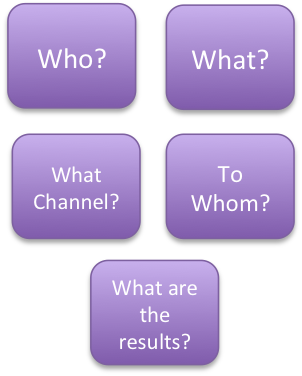Chapter 1: Defining Communication and Communication Study
1.1 Foundations
Foundations
Objectives
After reading this chapter you should be able to:
- Explain Communication Study.
- Define Communication.
- Explain the linear and transactional models of communication.
- Explain the process of perception.
- Understand the history of Communication.
- Discuss the benefits of studying Communication.

Many colleges and universities around the country require students to take some type of communication course in order to graduate. Introductory Communication classes include courses on public speaking, small group communication, and interpersonal communication. While these are some of the most common introductory Communication courses, many Communication departments are now offering an introductory course that explains what Communication is, how it is studied as an academic field, and what areas of specialization make up the field of Communication. In other words, these are survey courses similar to courses such as Introduction to Sociology or Introduction to Psychology. Indiana State University’s goal in this text is to introduce you to the field of Communication as an academic discipline of study.
Engaging in Conversation
As professors, we hear people talk about communication both on and off our campuses. We’re often surprised at how few people can actually explain what communication is, or what Communication departments are about. This resource will provide you with the basics for understanding what communication is, what Communication scholars and students study, and how you can effectively use the study of Communication in your life.
Defining Communication Study
What is Communication Study?

When we tell others that we teach Communication, people often ask questions like, “Do you teach radio and television?” “Do you teach public speaking?” “Do you do news broadcasts?” “Do you work with computers?” “Do you study Public Relations?” “Is that Journalism or Mass Communications?” However, the most common question we get is, “What is that?” It’s interesting that most people will tell us they know what communication is, but they do not have a clear understanding of what it is Communication scholars study and teach in our academic discipline. If you memorize the definition below, you will have a quick and simple answer to what communication study entails.
Bruce Smith, Harold Lasswell, and Ralph Casey provided a good and simple answer to the question, “What is Communication study?” They state that communication study is an academic field whose primary focus is “who says what, through what channels (media) of communication, to whom, [and] what will be the results” (121).
Although they gave this explanation almost 70 years ago, to this day it succinctly describes the focus of Communication scholars and professionals. As professors and students of Communication, we extensively examine the various forms and outcomes of human communication. On its website, the National Communication Association (NCA), our national organization, states communication is ” the discipline that studies all forms, modes, media, and consequences of communication through humanistic, social scientific and aesthetic inquiry.” Now, if people ask you what you’re studying in a Communication class, you have an answer!
Before we go further, it is important for you to know how we define the actual term “communication.”

